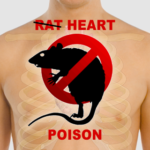By Ben Fuchs | Pharmacist Ben
Keratin, the hard protein that gives hooves and horn and feathers and scales and claws their tough, solid quality is a critical component of human skin as well. In fact, the surface of human is in effect coated with a super-thin layer of the resilient and protective substance.
 The 22 square foot organ called the skin is composed of layers and skin cells are born in the bottom layer and they gradually rise to the top. Skin cells are technically called keratin-o-cytes which is the Latin term for “cells that make keratin”.
The 22 square foot organ called the skin is composed of layers and skin cells are born in the bottom layer and they gradually rise to the top. Skin cells are technically called keratin-o-cytes which is the Latin term for “cells that make keratin”.
Skin cells or keratinocytes are born in the bottom layer of the skin and they gradually rise to the top becoming more and more filled with keratin. As they’re rising to the top they’re shriveling up too. Interestingly as the keratinocyte journeys upwards it produces a complex mixture of non-keratin amino acids called the Natural Moisturizing Factor (NMF) that act as a water attractant to help maintain skin moisture. By the time a skin cell has made it from the bottom layer to the top layer it is shrunken and filled with keratin and NMF to the point where it is not much more than a little speck of the hard protein and water trapping amino acids.
Sometimes skin cells will make way too much keratin. They’ll basically overproduce the stuff and you can little hard bumps called milea or keratosis, which is medical talk for excessive production of keratin. Excessive keratin can also clog pores and cause pimples to form.
If you have tiny little bumps on the skin, milea or keratosis, or your dealing with troublesome acne, one of the most functional ways to deal with the problem is to use topical vitamin A, especially retinoic acid (brand name Retin-A) or retinol. Even application of the mildest form of Vitamin A, retinyl palmitate can be helpful. Taking a couple 10,000 iu capsules a day is probably good idea too. You can apply apple cider vinegar or a 10 percent solution of glycolic acid directly on the skin, too. Correcting fat malabsorbtion problems with supplemental digestive enzymes, probiotics, lecithin and bile salts can help clear skin up, too.














